
From the Kaiser Papers, "They Were Cheap and Available: Prisoners as Research Subjects in Twentieth Century America," Author: Allen M. Hornblum -- Summary points: From the early years of this century, the use of prison inmates as raw material for medical experiments became an increasingly valuable component of American scientific research
Testimony by American medical experts at Nuremberg allowed American physicians and researchers to believe that the Nuremberg Code was directed only at Nazi scientists Postwar American research grew rapidly as prisoners became the backbone of a lucrative system predicated on utilitarian interests
Uneducated and financially desperate prisoners volunteered" for medical experiments that ranged from tropical and sexually transmitted diseases to polio, cancer, and chemical warfare.
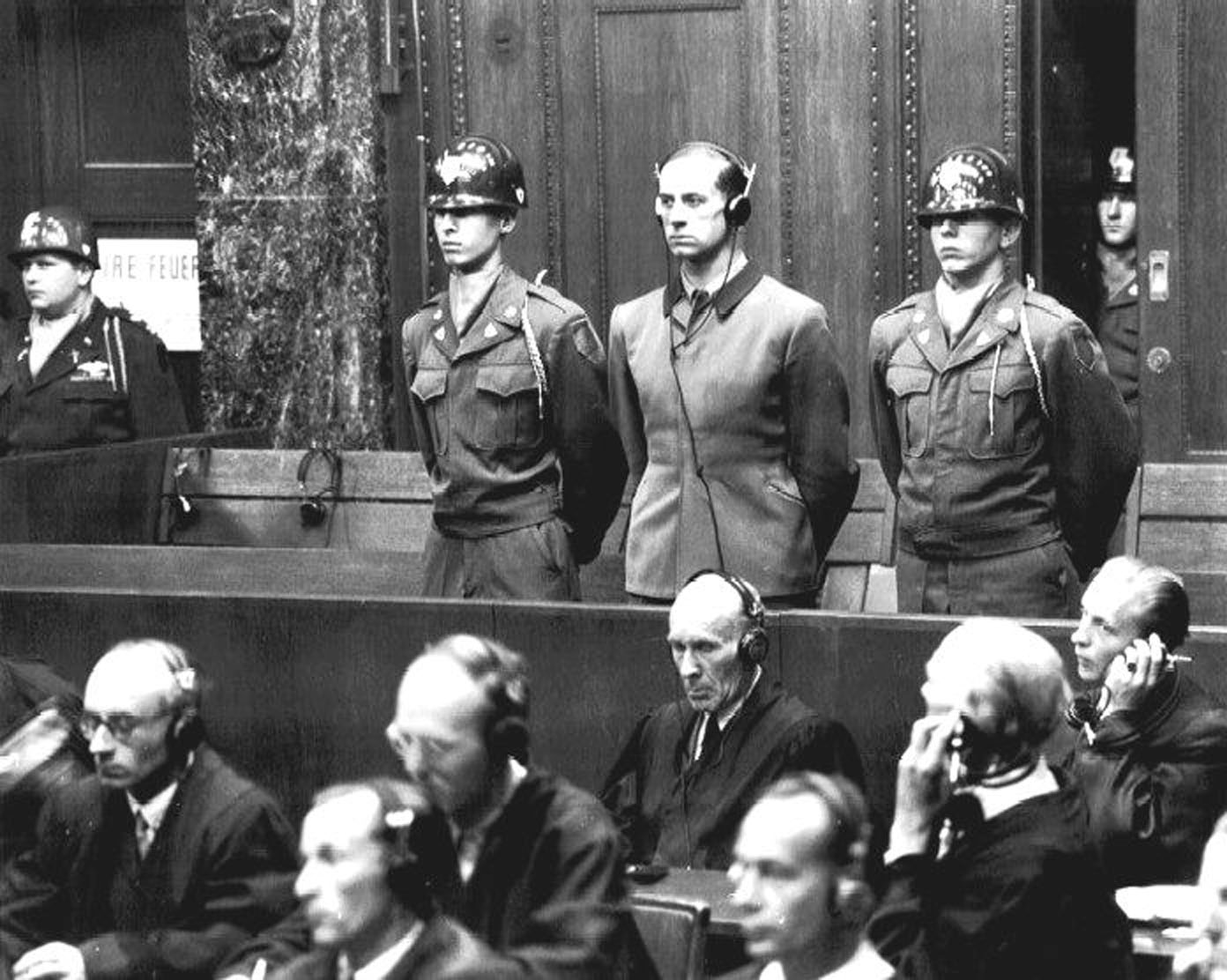
On 20 August 1947 Gerhard Rose, one of Germany's most respected physicians, stood in the prisoner's
dock at the Palace of Justice in Nuremberg, Germany, awaiting his sentence for "murders, tortures, and other atrocities committed in the name of medical science." Dr Rose, the department head for tropical medicine of the Robert Koch Institute, was on trial along with 22 of his medical colleagues, for perpetrating "ghastly" and "hideous" experiments on concentration camp prisoners during the war.1
At one point in the trial when the chief prosecution witness, Dr. Andrew C. Ivy of the medical school of the University of Illinois, underscored the basic principle "that human experimental subjects must be volunteers," Dr Rose and his defence counsel vigorously objected, arguing that the United States was guilty of similar medical practices and giving several examples to support this contention.1

Early experiments on prisoners in US
The Nazi doctor's first example of American complicity concerned the medical experiments of Dr Richard P. Strong, who performed a series of studies in 1906 with "cholera virus upon inmates of the Bilibid Prison in Manila." The Philippine Islands experiment on prisoners already sentenced to death resulted in 13 fatalities and was eventually attributed to a bottle of bubonic plague serum having been substituted mistakenly for a bottle of cholera serum.2,5
Strong, who later became professor of tropical medicine at Harvard University, was not deterred by the
error and continued experiments on Philippine prisoners. His beriberi experiments six years later also resulted in death, but survivors were compensated with cigars and cigarettes.

Another German physician on trial for his life at Nuremberg, Dr. Georg August Weltz, the chief of the Institute for Aviation Medicine in Munich, offered the name of another American doctor who used prisoners on behalf of medical science. Dr Joseph Goldberger, a public health official, sought to unravel the mystery of pellagra, a deadly and at times disfiguring disease that was particularly virulent in the southern United States.
Goldberger parted company with medical colleagues who blamed the disease on everything from poor sanitation and personal habits to spoiled corn and flawed hereditary traits for the disease. He believed pellagra was due to the provincial and poor diet in the south, which supplied calories but not protein. Milk, vegetables, and fresh meat, he theorized, were the missing staples.
To prove his theory, Goldberger convinced Gover nor Earl Brewer of Mississippi to allow him to perform an experiment on a dozen inmates of Rankin Farm prison. His plan was simple: to "induce pellagra in white adult males, the one group in the population that statistics had shown was the least likely to contract the disease."6 The inmate volunteers after a promise of a pardon where gradually weened away from their normal diet and given a steady supply of cornbread, sweet potatoes, grits, and rice. Complaints grew as the men suffered from lethargy, dizziness, and pains in their backs, sides, and legs. Soon skin lesions began to appear and the "red flame" of pellagra was identified on each of the test subjects. The governor kept his promise and pardoned the men. One test subject said he had been through "a thousand hells," whereas another swore he would choose a "lifetime of hard labor" rather than go through such a "hellish experiment" again.6
Dr Joseph Goldberger
As part of their defense strategy, the Nazi doctors on trial at Nuremberg named other examples of dubious human experimentation in American prisons, but those few cases paled in comparison to what transpired after Nuremberg.Though American doctors, lawyers, and justices at the Doctors' Trial excoriated Nazi physicians and denounced the German medical establishment for horrific and pseudoscientific experiments on prisoners, the American medical community disassociated itself from the implications of the trial and from the subsequent code of ethical research principles-the Nuremberg Code-that all doctors were supposed to observe. By the end of the war, America's rapidly emerging scientific dominance was not to be hamstrung by a code of medical conduct that was perceived by the American Medical Association to be directed specifically towards "the brutalities of Nazi physicians."7 Moreover, even though American jurists enumerated 10 human rights principles to safeguard the lives of research subjects-and imposed the death penalty on seven members of the Nazi medical hierarchy for violating such principles-self interest, utilitarianism, and the aura of science militated against the adoption of the Nuremberg Code in the United States. Research subjects, particularly prisoners, were considered too valuable.
The realization that incarcerated criminals had new utility as human guinea pigs did not emerge until the
second world war. Earlier efforts at using prisoners were not embraced by the orthodox medical community, which thought such practices were the preserve of unsophisticated medical eccentrics investigating offbeat scientific theories. For example, between 1918 and 1922 a doctor in the state prison system in California was "transplanting testicles from recently executed convicts to senile and devitalized men."8 By 1920, the procedure had been altered so that "animal glands were substituted for the human and were grafted to the recipient's testes." Dr L L Stanley, the resident physician at San Quentin Prison (California), where the operations were performed, recommended that the material to be used was "best taken from a ram, goat or boar" aged between a year and 18 months. Hundreds of San Quentin inmates received injections of animal testicular substance; some received a piece of ram's testicle the size of a silver dollar, which was implanted into the scrotum or abdominal wall. The innovative researcher on prisoners was convinced that the procedures had a "decided effect" on everything from "general athenia" to renewed "sexual stimulation." He also believed he was "fortunate" the operations-which he called "practically painless and harmless"-could be carried out in a prison because of the regimented lifestyle of prisoners.8 San Quentin inmates received testicular implants One prewar experiment that was less dramatic than testicular transplants, but captured the public's attention due to extensive newspaper coverage, was the series of tuberculosis experiments at Denver's National Jewish Hospital in 1934. After years of trials on animals, Dr H J Corper claimed a tuberculosis vaccine he had been developing was "now ready for trial on human beings."9
Two convicts from the Colorado Penitentiary were selected as the guinea pigs from the 800 who had volunteered for the risky experiment after Governor Edwin C Johnson offered executive clemency to the survivors. Carl Erickson, one of the lucky inmates chosen, said: "I don't want to die, I volunteered to help so I could get out of here."10 Mike Schmidt, his partner in the experiment, was equally suspicious of his good fortune: "I don't exactly relish the idea of making an experiment out of myself."11 Though Schmidt became very ill during the course of the experiment, newspapers eventually proclaimed "Tuberculosis test a success" and the men were granted their freedom.12 Interestingly, not all reviews of the Denver experiment were favourable. One critic, apparently more concerned about crime than disease, commented: "We fail to see any excuse for releasing upon the community two life term fellows because they didn't get tuberculosis when inoculated with a preparation of microscopic bugs."13
For the most part, however, experiments on prisoners during the early decades of the century were uncommon medical oddities of dubious worth. Surprisingly, the practice received a big boost with the outbreak of the second world war. With American soldiers fighting and dying in Europe and the South Pacific, a whole new industry utilizing "human material" was about to emerge that would shape researchers' behavior for decades to come.

The Second World War
By the summer of 1942, American prisoners in state penal systems had embarked on a series of dangerous medical experiments, including injections of blood from beef cattle as a new source of plasma, atropine studies, and experiments with sleeping sickness, sandfly fever, and dengue fever.14,15 Federal prisoners were recruited to participate in medical experiments that ran the gamut from exposure to gonorrhea and malaria to induction of gas gangrene.16
One of the more widely publicized prison experiments during the war years, and one that was mentioned prominently at the Nuremberg Doctors' Trial, was the series of malaria studies at Stateville Penitentiary in Illinois. Over 400 prisoners were involved in this two year study investigating treatment and purported cure of malaria. One popular account of the experiment was Nathan Leopold's book, Life Plus 99 Years. An enthusiastic participant in the dangerous study, Leopold was one of the famous killers in the 1924 Leopold and Loeb case. He proudly proclaimed that even though the inmates had to contend with periodic mosquito bites, raging fevers, nausea, vomiting, blackouts, endless untested medicinal potions, and occasional relapses, "no one squawked. They all took it like men."17 The highly publicized Stateville Prison malaria experiments received much public praise. An editorial in one newspaper proudly wrote that "these one-time enemies to society appreciate to the fullest extent just how completely this is everybody's war."18
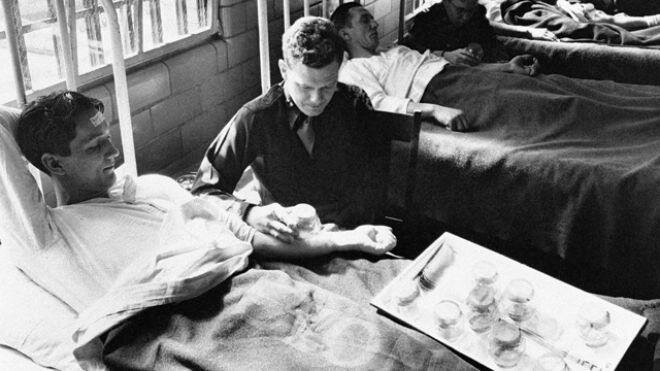
The war years had become the transforming moment for human experimentation Inmates received a dollar or two a day for participating in this skin study in the 1950's. in America and particularly for penal institutions as a site of such scientific endeavors. What had once been a small, underfunded, unsophisticated cottage industry had blossomed into a well financed, broad clinical research programme investigating avant garde procedures, cures, and treatments. Human experimentation had been legitimised and prisoners had become the guinea pigs of choice for scores of inspired researchers. Public opposition to such medical initiatives was scant The overriding goal was to win the war in Europe and Asia; everything else was secondary, including research ethics and the issue of consent Millions of American fighters were risking life and limb daily; at the very least, lawbreakers could contribute to the war effort with similar commitment And they did. One close observer described it as "another shining light in the galaxy of wartime achievement" by imprisoned Americans.19
Curiously, once the war was over, there was no decline of medical experimentation in prisons. Battlefield victories were replaced by medical triumphs as the focus of governmental concern, and prisoners were once again the subjects of choice for research.
The eradication of disease had become the enemy, and postwar budgetary priorities supported this societal mission. For example, in the last year of the war, the National Institute of Health received about $700 000, which had climbed to $36 million by 1955, and over 10 times that just 10 years later. In 1970, $1.5 billion was awarded to some 11 000 grant applicants, nearly a third of them performing experimentation.20 Called "the gilded age of research" by Professor David Rothman, this new era of laissez-faire attitudes in the laboratory ushered in a frenzy for research on prisoners that lasted for over a quarter century.20 Rothman argues that a "utilitarian ethic" was able to dominate the field of human experimentation because "the benefits seemed so much greater than the costs" and because "there were no groups or individuals prominently opposing such an ethic.21
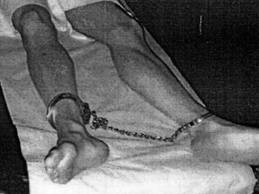
Postwar experimentation
One individual who contributed greatly to the postwar acceptance of prisoners as appropriate subjects for research was Andrew C. Ivy, an eminent researcher and vice president of the University of Illinois Medical School. Asked by the American Medical Association to be its representative at the Nuremberg Doctors' Trial and the prosecution's key witness on American medical ethics, Ivy testified to the high ethical standards of American researchers during the war, including those working in penal institutions. No American prisoner, Ivy reiterated, had ever been experimented on against his will. Defense counsel strongly objected to Ivy's sanitized portrayal of American prison research and peppered him with questions about numerous penal experiments both before and during the war.22 Dr Ivy remained intransigent; he did not believe that official coercion was necessarily inherent in a prison environment and restated his belief that prisoners in the United States had a choice as to whether they should participate in clinical experiments. Ivy articulated three "principles" for establishing ethical prison research: if "the consent of the subject was obtained"; if the experiment was based on "animal experimentation"; and if it was directed by "scientifically qualified persons" the medical procedure was acceptable.22 For American researchers anxious to utilize the thousands of potential subjects behind bars, Ivy's emphasis on acquiring voluntary consent from experimental subjects represented a seal of approval. In fact, the seal of approval came less than a year after the Doctors' Trial, when the journal of the American Medical Association published a "special article" that endorsed the "ideal" medical practice used in the Stateville malaria experiments, where Ivy claimed his principles had been implemented.23
Although the Doctors' Trial culminated in the establishment of the Nuremberg Code-whose first principle emphasized that the human subject "should have legal capacity to give consent ... exercise free power of choice, without the element of force ... constraint or coercion"-the American medical Community either claimed ignorance of the document or ignored it.24 The first principle of the code seemed to preclude the use of prisoners, but Ivy, America's star witness on medical ethics, extolled the virtues of just such scientific practices. The muddy ethical waters that resulted from the dual codes allowed American medical researchers to follow their own moral guidelines or utilitarian interests.

The result was tremendous expansion in prison experimentation in postwar America. Federal prisoners, for example, were enlisted in a broad range of clinical studies that included athlete's foot, histoplasmosis, infectious hepatitis, syphilis, and amoebic dysentery, and in additional malaria experiments.25 State prisoners were considered to be equally valuable and were soon utilized for studies of syphilis, malaria, influenza, viral hepatitis, and flash burns "which might result from atomic bomb attacks.26,30 Some of these postwar medical initiatives were scientifically unsound and placed prisoners at great risk. Louis Boy, for example, a prisoner in Sing Sing (New York), volunteered to become a human blood cleaning agent for a young "girl dying of cancer."31 For 24 hours the prisoner
and the 8 year old girl were laid side by side, "their circulatory systems linked together with rubber tubing," in the hope that her cancerous "poisoned blood" would be cleansed as it proceeded through his body. Unfortunately, the risky experiment proved unsuccessful and the girl died. However, public interest in the human drama resulted in the prisoner, a lifer, receiving a Christmas gift from the governor-his freedom.32
In the 1950s, American prisons hosted an increasing variety of non-therapeutic medical experiments, some of which captured national headlines because of the perceived dangers of the tests. The Ohio state prison system, for example, allowed researchers from the Sloan-Kettering Institute for Cancer Research to inject over 100 inmates with live cancer cells. The study was designed to examine "the natural killing off process of the human body"; inmates were informed they faced "no grave danger. Any cancer that took would spread slowly ... and could be removed surgically."33 One physician intimate with the study four decades ago recently said that prisoners were a "stable group of people" that contributed to the "assurance of continuity." Researchers, he argued, clearly found it " more difficult to work with unrestrained, unrestricted" test subjects (C. Southam, personal communication).

Prison experiments during the 1960s
By the 1960s, new drug testing regulations mandated by the Food and Drug Administration permitted increased human experimentation as large pharmaceutical companies sought stronger relationships with
penal institutions. Phase I drug testing now required larger pools of healthy subjects for non-therapeutic
experiments, and using hospital patients was thought to be inadequate. Prisoners, on the other hand, were in abundance and, as one pharmaceutical company researcher commented, "guaranteed to show up" (G. Wachs, personal communication).
The rush to acquire prison testing sites, combined with a relaxed ethical atmosphere and little governmental oversight, provided a financial opportunity for some opportunistic physicians, while at the same time jeopardising the health of the unsophisticated test subjects. One of the best examples of this unfortunate but all too common scenario was the controversial career of Dr. Austin Stough. Claimed to have grossed close to $1 million a year, Stough-and the pharmaceutical companies he worked for profited handsomely, while the inmates he used were made ill and some even died in an extended series of drug tests and blood plasma projects in Oklahoma, Arkansas, and Alabama.34
Stough's high volume plasmapheresis programme attracted great commercial interest, but his poorly trained staff and shoddy operations resulted in inmate volunteers receiving the wrong blood type and as many as 30 inmates a month contracting viral hepatitis. "They're dropping like flies out here," wrote one alarmed inmate to the outside world.34 Throughout the 1960s the use of prisoners as research subjects remained popular as prisons tested everything from tropical diseases and respiratory infections to infectious hepatitis and "pain tolerance studies.35,39
In rare cases, some prisons became super-markets of investigatory opportunity for zealous physicians representing aggressive private and public sector institutions. In Holmesburg Prison, for instance, a county facility in Philadelphia, an array of studies explored everything from simple detergents and diet drinks to dioxin and chemical warfare agents. The long list of sponsors included major pharmaceutical houses and diverse entities such as RJ Reynolds, Dow Chemical, and the United States Army.40

The end of prison experimentation
By the early 1970s, social and political indifference to human experimentation had begun to shift. Events as disparate as drug scares (thalidomide), hospital embarrassments (the use of 22 senile patients for live cancer cell studies at the Jewish Chronic Disease Hospital in New York City), alarming articles in professional journals (Dr Henry Beecher's analysis of unethical medical studies41), and popular books (Jessica Mitford's Kind and Usual Punishment39) contributed to a growing repugnance towards scientific experiments on unwitting and institutionalized populations. By 1973, with the controversial revelations surrounding the Tuskegee syphilis experiments, lawmakers and the general public had been chastened by the cavalier use of vulnerable populations for non-therapeutic medical studies.
Legislation was beginning to be introduced "to limit the use of prison inmates in medical research"42; prison administrators were voicing "serious doubts about the ability of prisoners to volunteer for any form of medical research"43; and prison research programmes were being terminated, especially the more controversial ones such as the decade-long studies in Oregon and Washington that irradiated the testicles of prison inmates.44

The pendulum that represented the public's acceptance of human experimentation had not only swung, but had swung decisively. Even physicians who had been long time advocates of the practice were forced to concede that scientific investigators and drug companies could continue their work without the use of prisoners.45 Some doctors- Dr. Albert Sabin, for example-resisted the new ethical current and continued to argue that prisoners were "a stable, long time permanent study group" perfect for medical research.46 By 1975, only 12 state prison systems were hosting medical experiments, and their numbers were declining rapidly.47 Less than a year later, the federal government announced the end of medical research on federal prisoners.48
After a quarter century of unrestrained use of prison inmates as cheap and available raw material for medical experimentation, the once widely accepted practice had come to an end. Victims of scientific and social forces, prisoners were still shunned, but they were no longer seen as the human equivalent of laboratory guinea pigs. Though some researchers initially resisted this new medical ethic, it gradually encompassed the entire medical community and terminated any thought of "the wealth of test material that there is in penitentiaries."49 [source: Kaiser Papers; Digitization of the British Medical Journal and its forerunners (1840-1996) was completed by the U.S. National Library of Medicine (NLM) in partnership with The Wellcome Trust and the Joint Information SystemsCommittee (JISC) in the UK. This content is also freely available on PubMed Central. Department of Urban Studies, Temple University, Philadelphia, PA 19122-2585, USA; Allen M Hornblum, instructor Correspondence to: 7100 Bustleton Ave, Philadelphia, PA 19149, USA; BMJ 1997;315:1437-41]
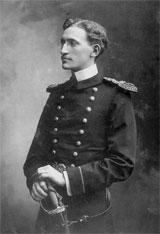
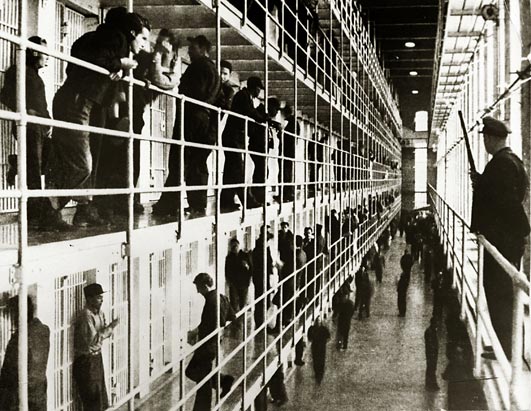

Your work has inspired me to be an excellent source. I pass on your blog to many of my friends as well.
ReplyDeleteNeed help in billing? Please visit:
Medisoft Software
Did you know that you can shorten your long links with AdFocus and make money from every visitor to your shortened urls.
ReplyDeleteSilver Gold Bull is a highly trusted precious metals dealer. You will be provided with bargain, up-to-minute prices and they will ensure that your gold and silver arrives to your door discreetly and securely.
ReplyDeleteDISCOVER How You Can Master Your Habits And Reprogram Your Subconscious Mind To Get Any Result You Want In Your Personal Growth and Fulfillment!
ReplyDeleteIntroducing... Procrastinating Your Procrastination!
kybd93vzc
ReplyDeletegolden goose outlet
golden goose outlet
golden goose outlet
golden goose outlet
golden goose outlet
golden goose outlet
golden goose outlet
golden goose outlet
golden goose outlet
golden goose outlet